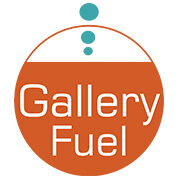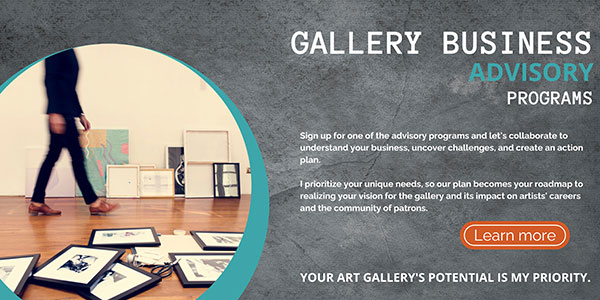 Social media is likely a significant part of your art gallery’s marketing plan. As new platforms come and go and algorithms constantly change, it can sometimes be challenging to know what to focus on beyond creating beautiful and entertaining content to post.
Social media is likely a significant part of your art gallery’s marketing plan. As new platforms come and go and algorithms constantly change, it can sometimes be challenging to know what to focus on beyond creating beautiful and entertaining content to post.
Many things affect how people respond to your gallery’s social media marketing. These also drive how you should implement your social media strategy. In this article, I want to focus on three things that seem constant for success on social media. These areas should be a priority for implementing your gallery’s digital marketing.
1. Creating engaging communities on social media
Social media groups or communities are growing in popularity. They create a new forum for having more meaningful dialogues with followers and increasing engagement. Groups could be a strategy to consider, particularly for galleries that are operating online only and those with a strong following on Facebook and LinkedIn.
Your gallery’s social media pages are about communicating to your target audience but think of groups as being more about communicating with them. You can show the more human side of the business and speak with them in a more conversational voice.
Facebook is focusing significantly on this feature to help bring greater meaning to user interactions.
To build a social media community for your gallery, you must be active and create content encouraging conversations. The goal is to cultivate a sense of community centered around your gallery program. The benefit is that it helps attract new prospective art buyers while also adding personalized elements to your gallery’s interactions.
This will become an increasingly effective strategy for organic social media success. It might be worthwhile experimenting with a gallery group on Facebook or LinkedIn and perhaps focusing it on young collectors to nurture their collection-building skills or for long-time clients and artists to interact more as a perk for being loyal collectors.
2. Providing gallery customer service on social media
There is an upward trend of people using social media as a customer service channel. Email is still the number one preference, followed by good old fashion picking up the phone. Still, as social media becomes more dynamic and engaging, more people want to reach out to a business from within the social platform.
A perfect example is the art galleries on Instagram that actively use direct messages from the platform to inquire about artworks. Facebook Messenger, Twitter Chat, and LinkedIn mail are all expected to be used more by interested followers.
Social media is being used more and more as a search engine and as an e-commerce platform. Both trends will fuel the importance of customer service on a social platform.
Most users who look for customer service from a company they follow expect a response time between two to four hours. During the pandemic, when everything was done online, many companies reinvented their customer experience to fit the digital customer, and now expectations for quality customer service online are set.
Always reply to any comments on your posts. This makes your followers feel loved and appreciated while illustrating customer service,
Providing excellent customer service on social media also builds trust with prospective buyers and fans who could refer your gallery to their network.
3. Optimize for Better Discoverability
People are using social media more like search engines, making SEO elements more critical for building your following. SEO on social media uses similar best practices as with search engines. You can optimize your social media SEO by including keywords in your captions, bio, post descriptions, image alt-text, and video-closed captions. This enables people to find your gallery’s content as they use social platforms for search.
As you create content, optimize your posts with the key words and hashtags you want your gallery brand to be associated with on that platform. Use all the features each platform offers to enhance your profile, such as about sections or bios, character limits, links, location and categories. Your profile page should use keywords in your profile name, handle, and about statement. Adding a location is also valuable. Instagram launched a searchable map feature enabling users to search tagged locations and filter by topic of interest.
Use relevant hashtags to help your art gallery’s profile and posts be discovered. Avoid spam hashtags like #art or #holiday. These are too generic. On LinkedIn, using more generic keyword hashtags is more accepted, but you want to use fewer on this platform. Treat your gallery’s hashtag strategy like a funnel. Use industry, location, and gallery brand tags, then narrow with more post-specific tags. Limit hashtags to 3-5 per post.
Digital Detox Trend
Lastly, one of the most interesting trends I see is people reducing their daily usage or canceling social media accounts altogether. I confess I’m considering dropping Facebook for a variety of reasons.
There is an increase in the number of users removing apps from their phones, so they do not use social media as much. Others are reducing the number of platforms they use. The percentage of people embracing a digital detox today is small but growing. It is worth considering what your collectors and prospects might do so that you can adjust your art gallery’s social media efforts appropriately.
If you are trying to reach younger prospects on social media, there may be fewer on Facebook than you thought. Older collectors may have become fed-up with all the privacy issues and overwhelmed by ads. They are deleting some social platforms altogether. It will be worth staying on top of what your audience is doing with social media shifts.
You don’t want to waste time developing an audience that may not be on a platform for much longer. You also don’t have “shiny object syndrome” and jump into a new platform too quickly. Remember Google + and Clubhouse.
To the Point
It’s crazy how fast things change and the implications that they can have on your gallery’s marketing strategy.
Keeping track of what all the social media platforms are doing and how users, your potential audience, is reacting can get complicated. Most of the trends I see happening in social media marketing will have a greater impact on other industries outside the art world. I want you to focus your efforts on running an art gallery business using social media efficiently.
Consider the community you build and the service you provide as areas to develop. As platforms evolve and daily use grows, social media is becoming an important search engine. Incorporating SEO will be essential to your discoverability success. I recommend you prioritize these areas as you implement the art gallery’s social media strategy.
Check out these related articles.
Why Stories Matter to Your Gallery’s Social Media Marketing
How to Run an Artist / Gallery Social Media Collaboration Campaign



Leave a Reply